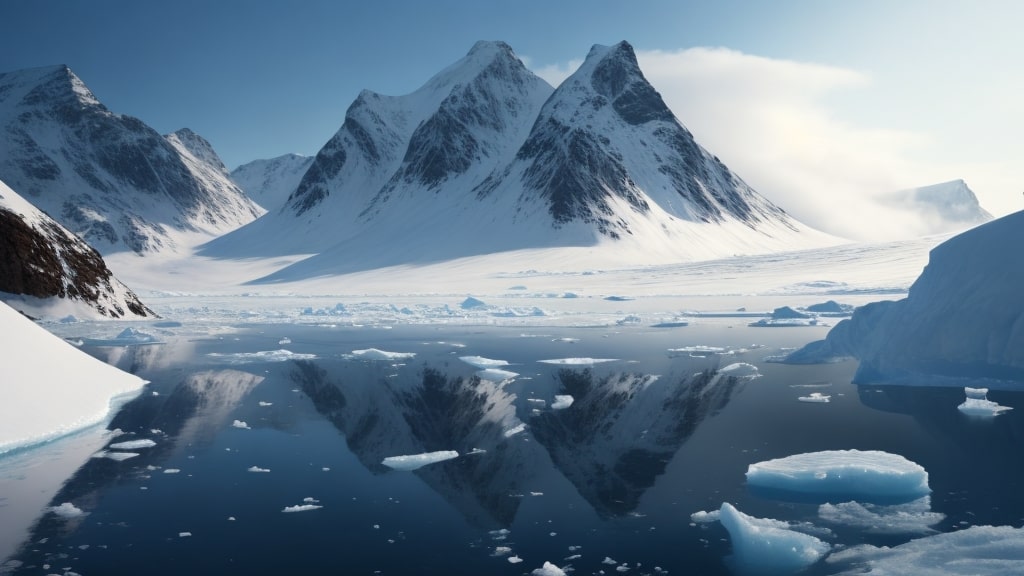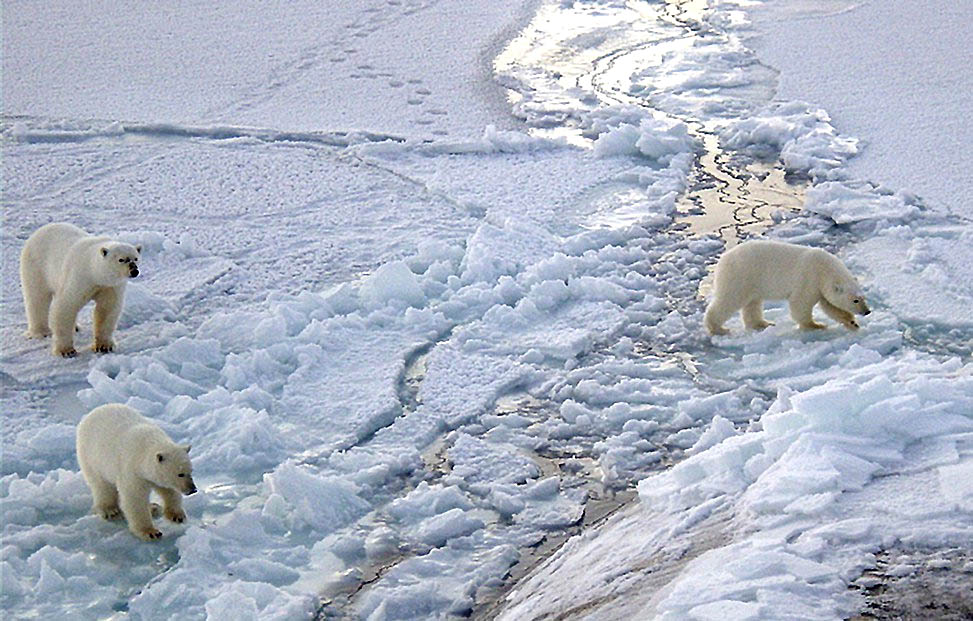
The Arctic type of climate is characteristic of the Arctic and subarctic belt. There is such a phenomenon as polar night, when the sun does not appear above the horizon for a long time. During this period, there is not enough heat and light.
Characteristics
The Arctic climate is characterized by very harsh conditions. Here only at certain times of the year the temperature rises above zero, the rest of the year it is freezing. Because of this, glaciers are formed here, and part of the continent has a thick snow cover. That is why a special world of flora and fauna has formed here.
The main characteristics of the Arctic climate:
- a very cold winter
- short and cool summers
- strong winds
- little precipitation
Characteristics of the Arctic climate, in general, can be classified as, on the one hand, typical for tundra lands where in the warmest annual period the temperature averages from 0 to 10 degrees C, on the other hand - the most suitable for areas with ice cover for areas where snow does not melt and the average temperature is about 0 C. Sometimes it snows, but in general for the climate of the Arctic precipitation is a rare phenomenon.
Arctic climate
The polar climate is divided into the following types:
- Tundra climate (in the warmest month the average temperature is between 0°C and 10°C)
- the climate of areas with ice cover (the temperature hardly ever rises above 0°C, and there is constant snowfall)
Geographically, the Arctic Zone is located near the North Pole and covers a huge area of about 27 million square kilometers. The climate here is the harshest on the planet. It is also the most unpredictable and changeable: suddenly the temperature can rise from 7 to 10 degrees as a result of a powerful warm cyclone. A sharp piercing wind of several dozens of meters per second may rise and also stop abruptly.
January is the warmest winter month in the Arctic, with air temperatures reaching minus 2-5 C. Local water areas are colder than the air. Temperatures in the Barents Sea - minus 25 C, in the Chukchi and Greenland Seas - minus 36 C, water temperatures in the Siberian and Canadian basins - minus 50 C. Very severe are the northern waters of the water area, where the temperature readings reach minus 60 C.
The Arctic winter is characterized by the intensified action of cyclones. Their part that comes mainly from the Atlantic Ocean is associated with such climate features as high air temperatures, frequent winds, maximum precipitation, and large cloudiness. Winter cyclones are usually fierce in the Siberian part of the Arctic, their influence is slightly weaker in the Greenland and Canadian areas. Winds here are either negligible or moderate, precipitation is low, frost is heavy, and cloudiness is light.
Temperature
For the most part, winter lasts in the Arctic climate zone. The average temperature is -30 degrees Celsius. Summer is short, lasting a few days in July, and the air temperature, reaching 0 degrees, can reach +5 degrees, but very soon frosts come again. As a result, the air during the short period of summer does not have time to warm up, the glaciers do not melt, moreover, the earth does not receive heat. This is why the continental area is covered with snow, and glaciers float in the water areas.
In general, the temperature during the year ranges from +5- to -40 degrees Celsius. Sometimes in some areas there is a decrease to -50 degrees.
Precipitation
As we have already mentioned еhe Arctic climate zone is conventionally divided into two types. The continental type area receives about 100 millimeters of precipitation per year, in some places - 200 mm. In the oceanic climate area, precipitation is even less. Mostly snow falls, and only in summer, when the temperature barely rises to 0 degrees Celsius, does it rain.
Surprisingly, precipitation is very rare. The illusion of endless snowfall is created by the piercing winds that sweep away the snow that has already fallen and lift it into the air. Water bodies affect the climate, so near icy oceans and seas, it is warmer and snowfalls tend to be heavier, unlike colder, drier mainland areas.
Vegetation
The flora of the tundra and desert in the Arctic climate is poor. There are no trees, only shrubs, grasses, mosses, and lichens. In some areas, polar poppies, bluegrass, alpine foxtail, sedge, and cereal plants sprout in summer. Most of the vegetation is under permafrost, so it is difficult for animals to get their food.
Also found in the Arctic wilderness are croupberry, polar poppy, stargazer, pikegrass, buttercup, mint, alpine foxtail, stonecrop, and other species.
In total, there are no more than 350 higher plant species. In the south of the desert, you can find polar willow and dryad shrubs.
Animals

The animal world in the Arctic climate zone is rather poor, as living creatures have to adapt to the difficult conditions. On the continents and islands, there are reindeer wolves and lemmings, reindeer and Arctic foxes. Greenland is home to a population of musk oxen. One of the traditional inhabitants of the Arctic climate is the polar bear. It lives both on land and swims in water areas.
There are about 120 species of animals living in the Arctic desert. All representatives of the animal world are adapted to the harsh climatic conditions and are able to survive in extreme situations. Animals have thick fur and a thick layer of fat, which helps them survive the cold.
The bird life is represented by polar owls, guillemots, eiders, and roseate gulls. On the coast there are flocks of seals and walruses. Pollution of the atmosphere and the world ocean, melting glaciers, and global warming contribute to the reduction of animal and bird populations. Some species are under the protection of different states. National nature reserves are also created for this purpose.
Natural Resources
Despite the unfavorable living conditions, the Arctic wilderness is quite attractive for mining. The main natural resources are oil and gas. In addition, fresh water can be found in the snow-covered areas, valuable fish species can be caught, and other minerals can be extracted. Unique, unspoiled, mesmerizing glaciers attract thousands of tourists, bringing additional economic benefits.
Arctic areas also have deposits of copper, nickel, mercury, tin, tungsten, platinoids, and rare earth elements. Precious metal deposits (silver and gold) can be found in the desert areas.
Today the Arctic is one of the main sources of fresh water, as it contains up to 20% of the world's supply.